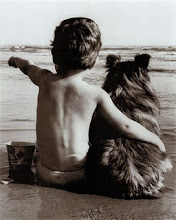A symbol is a sign, token, or emblem, which signifies something else. A symbol is something such as an object, picture, written word, sound, or particular mark that represents something else by association, resemblance, or convention. For example, a red octagon may stand for "STOP". On maps, crossed swords may indicate a battlefield.
Psychology has found that people, and even animals, can respond to symbols as if they were the objects they represent. Pavlov's dogs salivated when they heard a sound which they associated with food, even if there was no food. Common psychological symbols include a gun to represent a penis or a tunnel to represent a vagina.
The psychologist, Carl Jung, who studied archetypes, proposed an alternative definition of symbol, distinguishing it from the term "sign". In Jung's view, a sign stands for something known, as a word stands for its referent. He contrasted this with symbol, which he used to stand for something that is unknown and that cannot be made clear or precise. An example of a symbol in this sense is Christ as a symbol of the archetype called "self"
Language itself, both written and spoken language is symbolic. In written language, the letters of the alphabet are only lines and curves on a page. And a word contains of arrangement of some letters which by common agreement represent something else. In spoken language the symbol can be the sound of every letter and word, or can be the nonverbal language, body language for instance. In everyday life we are surrounded by symbols. For example, the symbol placed in the trademark, flag, statue, emblems, etc.
With metaphor we announce that one thing is another, in order to describe it or point it up its meaning more clearly. A metaphor is a figure of speech concisely comparing two things, saying that one is the other. The English metaphor derives from the 16th c. Old French métaphore, from the Latin metaphora “carrying over”. Moreover, metaphor also denotes rhetorical figures of speech that achieve their effects via association, comparison, and resemblance, e.g. antithesis, hyperbole, metonymy, and simile; all are species of metaphor.
The Philosophy of Rhetoric (1936), by I. A. Richards, reports that metaphor is in two parts: the tenor and the vehicle. The tenor is the subject to which attributes are ascribed. The vehicle is the subject whose attributes are borrowed. Other writers employ the general terms ground and figure to denote tenor and the vehicle. Consider the All the world's a stage monologue from As You Like It:
All the world’s a stage,
And all the men and women merely actors;
They have their exits and their entrances; — William Shakespeare, As You Like It, 2/7
In this metaphoric example, "the world" is compared to a stage, describing it with the attributes of “the stage”; "the world" is the tenor, and "a stage" is the vehicle; "men and women" is a secondary tenor, "players" is the secondary vehicle.
skip to main |
skip to sidebar


- Find out what I'm doing, Follow Me :)
Functions of symbols and Metaphor
Posted by
FDP
on Thursday, October 8, 2009

FOLLOW me...
MY PODCAST
Please visit my Podcast at freddydirga.podomatic.com
Content
- Teaching Strategy (3)
- Blog (2)
- Argumentative Essay (1)
- Cause and Effect (1)
- Descriptive (1)
- Iptek (1)
- Narrative (1)
- Podcast (1)
- Poem (1)
- cheat cegel seal online sealindo indonesia 2010 (1)
My Blog List
Blog Archive
About Me

- FDP
- Making a blog is not only about design. A simple but nice blog is the most favorable one. Make it like this guys...
My visitors
Freddy's All Rights Reserved. Blogger Template created by Herdian Dirga
Wordpress Theme by Freddy Dirga | Supported by Retr0 Net


0 comments:
Post a Comment
Leave your comment please...